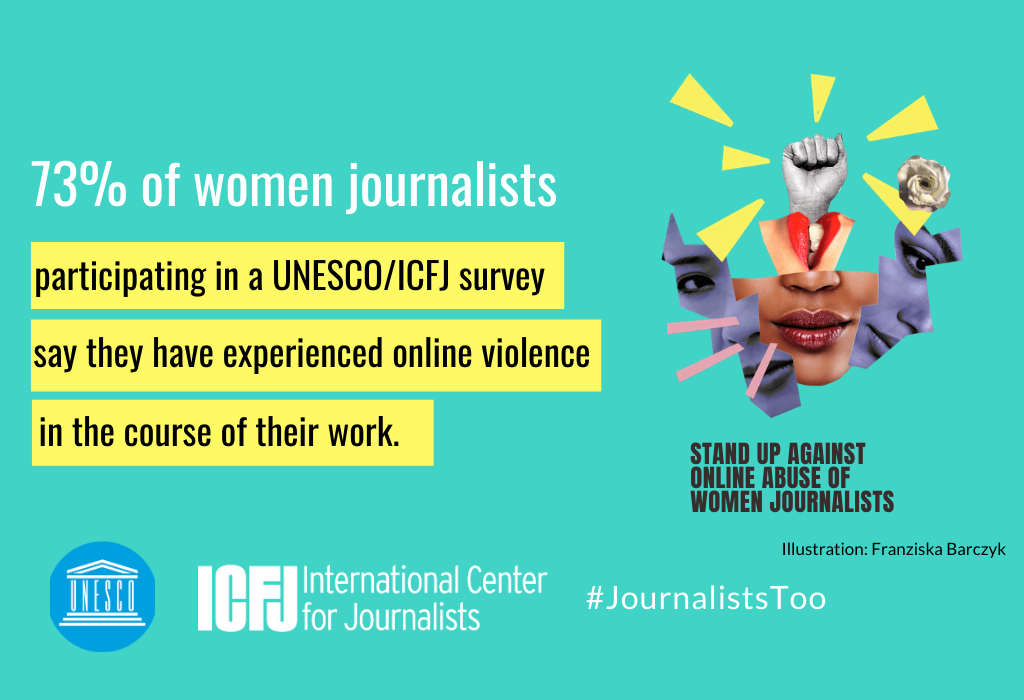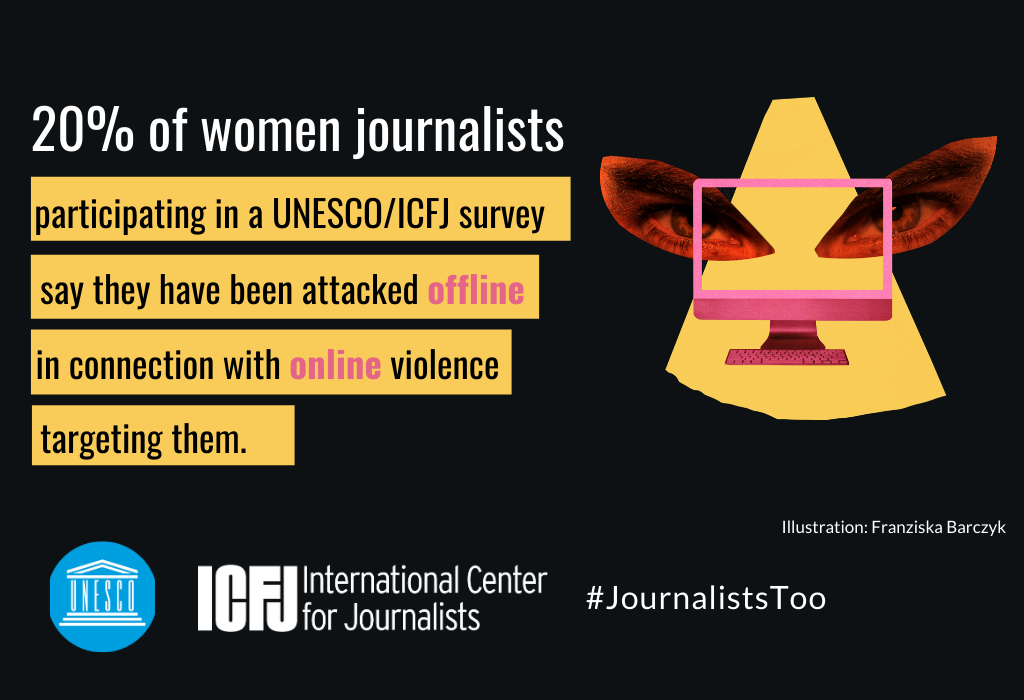On 25 November, the International Day to Eliminate Violence Against Women, UNESCO and the International Center for Journalists (ICFJ) published the first data from the survey they conducted on online violence against women journalists. Their survey ran for six weeks, netting 1210 respondents across five languages (English, French, Spanish, Portuguese, and Arabic). This blogpost presents the preliminary findings of the survey which were published today in the syndicated op-ed ‘New Research: Alarming Evidence of Online Attacks on Women Journalists Leading to ‘Real World’ Violence’. Additional findings will be published in the coming months.
Publications in the media
Deutsche Welle: New Research: Online attacks on women journalists lead to ‘real world’ violence
Rappler: Alarming evidence of online attacks on women journalists leading to ‘real world’ violence
The Conversation: Online attacks on female journalists are increasingly spilling into the ‘real world’ – new research
Preliminary findings

Online violence is the new frontline in journalism safety – and it is particularly dangerous for women. Women journalists experience higher levels of harassment, assault and abuse in their daily lives than their male counterparts. Women journalists are also at much greater risk in the course of their work, especially on digital platforms. In the online environment, we see exponential attacks – at scale – on women journalists, particularly at the intersection of hate speech and disinformation, grounded in misogyny. This is a challenge to both gender equality and freedom of expression.
Furthermore, the risks increasingly extend to women journalists’ families, sources and audiences. Online attacks against women journalists are often accompanied by threats of harm to others connected to them, or those they interact with, as a means of extending the ‘chilling effect’ on their journalism.

The survey results also show that the problem of online violence against women journalists is increasingly spilling offline. This is disturbing, as it underlines the fact that online violence is not contained within the digital world. In 2017, the Committee to Protect Journalists reported that in at least 40 percent of cases, journalists who were murdered reported receiving threats, including online, before they were killed, ‘highlighting the need for robust protection mechanisms’. The same year, two women journalists on opposite sides of the world were murdered for their work within six weeks of one another: Maltese investigative journalist Daphne Caruana Galizi and Indian journalist Gauri Lankesh. Both had been the targets of prolific, gendered online attacks before they were murdered.

Physical violence against women has increased during the COVID-19 pandemic, in what is called the ‘shadow pandemic’. At the same time, online violence against women journalists also appears to be on the rise. In another global survey, conducted earlier this year by ICFJ and the Tow Center for Digital Journalism at Columbia University as part of the Journalism and Pandemic Project, 16 percent of women respondents said online abuse and harassment was ‘much worse than normal’.
These results call for action, taking online threats seriously too and not putting the onus on women journalists to ‘just put up with it’. There is a need for news organisations to have gender-sensitive policies, guidelines, training, and leadership responses, which are connected and holistic in the sense that they address physical, digital, psycho-social and legal safety. In addition, we need structural changes to the information ecosystem designed to combat online toxicity generally and exponential attacks against journalists, in particular. Ultimately, collaboration and cooperation that spans big tech, newsrooms, civil society organisations, research entities, policymakers and the legal and judicial communities will be required. Only then can concrete action be pursued.
